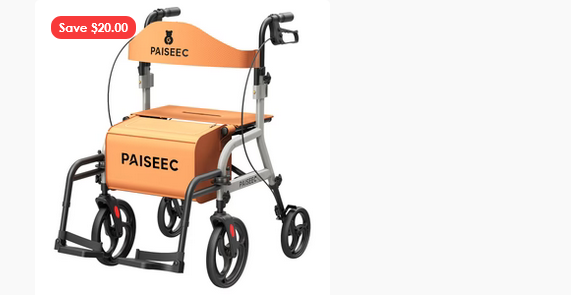Choosing the Right Wheeled Walker: A Complete Guide for Mobility and Comfort

Maintaining independence and mobility is essential for individuals facing challenges with walking or balance. Wheeled walkers, also known as rollators, offer a convenient and safe solution for people who need extra support. Whether you’re recovering from surgery, managing a chronic condition, or just need a bit more stability, choosing the right wheeled walker can greatly enhance your comfort and quality of life. In this guide, we’ll walk you through everything you need to know to make an informed decision.
What is a Wheeled Walker?
A wheeled walker, or rollator, is a mobility aid equipped with three or four wheels, handlebars, and often a seat and storage compartment. Unlike traditional walkers that require lifting, rollators glide smoothly across surfaces, making them ideal for both indoor and outdoor use. They are designed to help reduce fatigue and prevent falls while encouraging active movement.
Types of Wheeled Walkers
There are several types of wheeled walkers available, each designed to meet specific needs:
-
Three-Wheel Walkers: Lightweight and easy to maneuver, these are great for tight spaces. However, they lack a seat, making them less suitable for long outings.
-
Four-Wheel Walkers: These offer more stability and often come with a built-in seat, brakes, and storage. They’re ideal for individuals who want to rest periodically during walks.
-
Heavy-Duty Walkers: Built for larger individuals, these models support higher weight capacities and provide enhanced durability and comfort.
-
Folding Walkers: Designed for travel and compact storage, these can be folded down easily for transportation in a car or storage at home.
Key Features to Consider
When selecting a wheeled walker, here are some important features to consider:
1. Weight Capacity
Ensure the walker can safely support the user’s weight. Most standard models support up to 300 pounds, while bariatric models can handle more.
2. Adjustable Handle Height
Proper handle height is crucial for comfort and posture. The handles should align with the user’s wrists when arms are relaxed at their sides.
3. Braking System
Look for walkers with reliable and easy-to-use brakes. Loop-style hand brakes are common and can be locked in place when seated.
4. Seat and Backrest
If the user needs frequent breaks, a padded seat and backrest provide added comfort. Check the seat dimensions to ensure a good fit.
5. Wheels
Larger wheels (typically 8 inches or more) are better for uneven terrain, while smaller wheels are suited for indoor use.
6. Portability
Lightweight frames and foldable designs are ideal for users who need to transport the walker frequently.
Tips for Safe Use
-
Adjust the height correctly to avoid strain on the back and arms.
-
Test the brakes regularly to ensure they are functioning properly.
-
Use the seat only when the walker is fully stationary and brakes are locked.
-
Avoid using the walker on slippery or uneven surfaces unless it is specifically designed for those conditions.
Final Thoughts
Choosing the right wheeled walker involves balancing comfort, mobility, and personal needs. Consulting with a physical therapist or healthcare provider can also help determine the best model for your specific situation. With the right rollator, users can enjoy greater independence, safety, and confidence in their daily lives.
- Industry
- Art
- Causes
- Crafts
- Dance
- Drinks
- Film
- Fitness
- Food
- Jeux
- Gardening
- Health
- Domicile
- Literature
- Music
- Networking
- Autre
- Party
- Religion
- Shopping
- Sports
- Theater
- Wellness
- News


